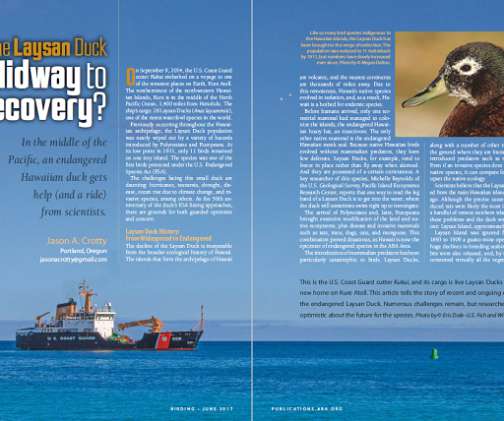Endangered Species Act: Potential Downlisting for Hawaiian Goose (nene)
10,000 Birds
MAY 8, 2018
More than 50 years ago, the Hawaiian Goose (Nene) was one of the first birds listed under the Endangered Species Act, part of the inaugural “ Class of 1967 ”. Fish and Wildlife Service has proposed downlisting it from “endangered” to “threatened.”. Due to substantial improvements in its population and its prospects, the U.S.












Let's personalize your content